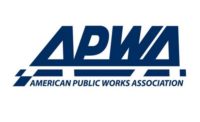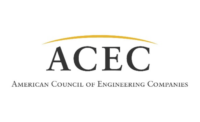WASHINGTON — A panel of national infrastructure funding experts pressed for the establishment of a new federal infrastructure planning council that could coordinate multiple agency policies and funding programs to improve the federal response to the nation’s infrastructure needs.
Panelists applauded new strategies outlined in the “America’s New Playbook for Infrastructure” developed by the nonprofit Accelerator for America in collaboration with the new National Infrastructure Partnership, which includes the ACEC Research Institute, WSP USA, HNTB, and the U.S. Conference of Mayors, among others. The playbook offers strategies for a fundamental shift away from “a current top-down, outmoded federal funding model,” including the need for more autonomy by local governments on local infrastructure needs.
During the Research Institute’s webinar titled: “Holistic Infrastructure Planning and Design” panelist and Oklahoma City Mayor David Holt called the playbook an important tool in finally fulfilling promises made to substantially improve U.S. infrastructure. “We’ve got to it done this time,” he said. “Whatever moves us forward has to be appreciated.”
In addition to Holt, the panel included: Henry Cisneros, former Secretary of Housing and Urban Development; Robert Puentes, president/CEO, Eno Center for Transportation; and Beth Osbourne, director, Transportation for America.
Cisneros said it was time to “coordinate disjointed approaches” to infrastructure funding, which he noted is divided into three levels — county, state, and federal — with each having its own silos.
“It’s not surprising that local communities are struggling with getting the funding they need,” Cisneros said. “We need more coordination at the federal level — an infrastructure planning group that’s higher than the cabinet level,” he said, adding that such a new planning group would be more willing to listen to local leaders who have a better sense of what their community needs.
Puentes agreed, adding that “it’s a challenging time to know Washington’s priorities, but knowing priorities of leaders at the local level is clear.” He also emphasized the need to redefine and expand the scope of the federal discretionary grant program.
“Infrastructure is not just one thing, but an abstract collection of structures that all provide benefits to the community,” he continued
Osbourne pointed to more adoption of “Complete Streets” design principles by transportation designers and planners. Complete Street designs add elements to make roadways safer and more accessible for all modes of transportation, including transit, pedestrian, and bike traffic. The playbook recommends national standardization to help local governments plan innovative street designs without federal mandates requiring them.
Osbourne stated that Complete Streets are exactly the opposite of traditional designs meant for higher speeds.
“What results is a roadway not designed for anything else and ends up becoming a physical barrier to improved safety, access, and economic development,” she said.
The “Holistic Infrastructure Planning and Design” panel discussion was part of the ACEC Research Institute’s “A New Playbook on National Infrastructure Policy” webinar series. For more information, click here.




